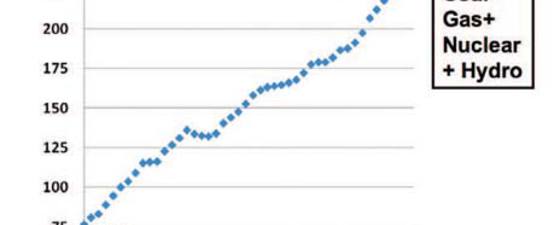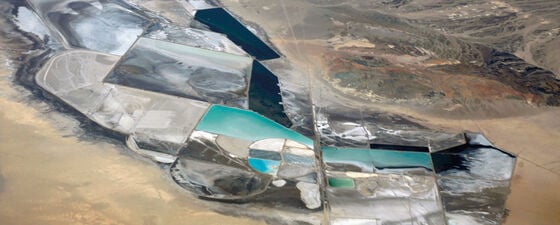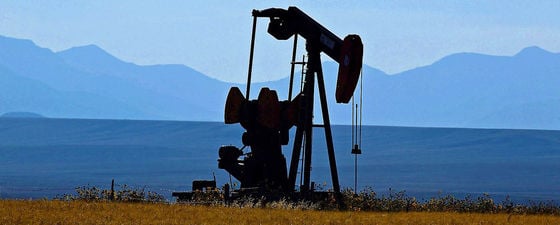Most of the readers will be familiar with the “Peak Oil” concept. The essence is that long before the hydrocarbon reservoirs in a region are empty, the production from that region will no longer increase, but will have to start decreasing, and it will happen at roughly the 50% level. For the whole world it is difficult, maybe even impossible, to say where in time this point is. Most people seem to agree that we are fairly close.
At that point in time demand will probably still be increasing, but production capacity will no longer be able to follow it, resulting in a shortage. This is when our problems will start; unstable markets, extreme prices, conflicts. Sounds familiar?
From one system to another
 In this article, I will not argue against “Peak Oil” and the problems connected to it. My point is that “Peak Oil” represents the turning point for only one parameter; namely oil. We get energy from several different sources. The real problem comes when we are no longer able to increase the total energy production for a certain time period.
In this article, I will not argue against “Peak Oil” and the problems connected to it. My point is that “Peak Oil” represents the turning point for only one parameter; namely oil. We get energy from several different sources. The real problem comes when we are no longer able to increase the total energy production for a certain time period.
For the last 20-40 years, the level of new oil discoveries has been far below consumption. Obviously this is not sustainable; improved technology can help, but we have to recognize that eventually it will be impossible to keep increasing production.
Given all the energy alternatives we have, including oil, gas, coal, nuclear, wind, solar and biofuel, there is probably no foreseeable absolute maximum amount of energy that we can produce. However, there may well be time lags between the capacity limitations of one energy system and the point at which another system can take over. I argue that we are about to enter into such a period.
Energy production today
 BP has recently released statistics covering energy resources, production and consumption up to the end of 2007. Using these data we find that the total energy consumption from 1965 to 2005 has increased from 76.8 million barrels per day oil equivalent (MMboepd) to 222.9 MMboepd; an increase on average of 2.6% per year. The largest energy source is still oil, 79.4 MMbpd, followed by coal, and natural gas at 63.8 and 53.0 MMbpdoe respectively.
BP has recently released statistics covering energy resources, production and consumption up to the end of 2007. Using these data we find that the total energy consumption from 1965 to 2005 has increased from 76.8 million barrels per day oil equivalent (MMboepd) to 222.9 MMboepd; an increase on average of 2.6% per year. The largest energy source is still oil, 79.4 MMbpd, followed by coal, and natural gas at 63.8 and 53.0 MMbpdoe respectively.
Despite high growth rates, renewable energy still represents only a very small part of today’s global energy picture. Geothermal, wind and solar electricity generation combined accounts for approximately 1.5% of global electricity generation. With a reasonable conversion factor it is equivalent to about 1.6 MMbpdoe. We should of course work on all of these alternatives, but at the same time we have to recognize that it will be a very long time until they represent a significant part of the energy picture.
Focusing on the three most important energy products; oil, coal and gas, we find that since 2002 oil production has increased by approximately 6.9 MMbpd (from 72.5 to 79.4). This represents 1.8% in average, i.e. less than the average energy consumption increase in the period 1965 to 2007. Converted to oil (equivalent) natural gas production has increased by 7.1 MMbpdoe (from 45.9 to 53.0), giving an average increase of 3% per year. This does not look bad; it proves that we are still able to increase output. The essential point, however, is that oil and gas together are nowhere near to solving the increased demand for energy in the world.
The industry that has outperformed the oil industry by far is the coal industry. We might dislike it for many reasons, mostly environmental in my case, but the coal industry has shown a fantastic ability to increase production. Using reasonable conversion factors, we find that coal production has increased by a stunning 15.5 MMbpdoe from 2002 to 2007 (from 48.3 to 63.8), which is an increase of more than 5% per year on average. I think most will agree that the oil industry simply would not have been able to increase production at anywhere near this rate.
What we are seeing, therefore, is that the coal industry is taking care of the bulk of the increased energy demand; not the oil industry. The coal industry has been able to increase output at a fantastic rate (although at a price, especially to the environment), far outperforming the oil and gas industry, and has “bailed” us all out of what otherwise would probably have been a real energy crisis. The increase in coal consumption is almost equal to the total combined consumption increase of oil, gas, hydro and nuclear. The spectacular industry growth we have seen for example in China is of course largely driven by this increased use of coal. Continuing with the same growth rate as we have had over the last 5 years, coal will again become the most important energy source in another 5 or 6 years. I sincerely hope by then we have significantly cleaner systems than those they had in London in the late 19th century.
How much energy do we have?
 Proven reserves are those quantities that geological and engineering information indicates with reasonable certainty can be recovered in the future from known reservoirs under existing economic and operating conditions. For any oil company, their stock value is tightly connected to this figure. It is therefore in the interest of the management to get these as high as possible (as we saw with Shell some years ago). I recognize there will be a delay, but I am still surprised to see that the total proved reserves have not increased at all lately in spite of the increase in oil price. Converting everything into oil equivalent it gives us a total of 65,00 billion barrels (oil + gas + coal). Assuming we are 6.5 billion people in the world and for the academic exercise let us assume each of us live forever. That means we each have the equivalent of 1,000 boe to use from now until eternity, if we split it equally.
Proven reserves are those quantities that geological and engineering information indicates with reasonable certainty can be recovered in the future from known reservoirs under existing economic and operating conditions. For any oil company, their stock value is tightly connected to this figure. It is therefore in the interest of the management to get these as high as possible (as we saw with Shell some years ago). I recognize there will be a delay, but I am still surprised to see that the total proved reserves have not increased at all lately in spite of the increase in oil price. Converting everything into oil equivalent it gives us a total of 65,00 billion barrels (oil + gas + coal). Assuming we are 6.5 billion people in the world and for the academic exercise let us assume each of us live forever. That means we each have the equivalent of 1,000 boe to use from now until eternity, if we split it equally.
In my effort to recruit students to geoscience, I often ask possible future students; what do you think are the two biggest problems in the world for your generation? (disregarding terrorism, nuclear war, etc.) I get many answers, but I insist that my own answers are the correct ones. These are: Problem 1; get enough energy. Problem 2; preserve the environment. And this has all to do with geoscience. With the students, I then go on and illustrate my own energy budget. I use 0.3 barrels per year for kitchen gas, 6.3 barrels for driving car, 6.8 barrels for travel (airplanes) and a stunning 81 barrels per year for cooling the house I rent; altogether 95 barrels. I will thus spend my “quota” of 1000 barrels in 11.5 years without including my part of the public consumption for water, electricity etc.
The “worst guys” in this picture are Canada, US, Norway (my home country), Belgium, Saudi Arabia, Bahrain, Qatar and UAE (where I now reside). All of these have an annual per capita energy consumption of more than 6 tonnes oe (44 boe), which means they will spend their “quota” in some 23 years.
The rest of the World’s population obviously wants to have a similar living standard as us. At the moment the “runners up” are China and India. The problem is that all experiences show that increase in living standards corresponds to an increase in use of energy. We see it very clearly at the moment in China’s increase in energy consumption. The fact is that if we (the developed countries) continue to use energy as we do, and if they (the developing countries) continue to ask for more energy as they do, we are dependent on the coal industry to solve the main part of the increased demand.
A scaring scenario
 The last 5 years has seen oil production increase by 6.9 MMbpd, gas by 7.1 MMbpdoe, and coal by 15.5 MMbpdoe. In our generation we have also seen CO2go up to 370 ppm while the maxima over the last 400,000 years have been around 270.
The last 5 years has seen oil production increase by 6.9 MMbpd, gas by 7.1 MMbpdoe, and coal by 15.5 MMbpdoe. In our generation we have also seen CO2go up to 370 ppm while the maxima over the last 400,000 years have been around 270.
We might still be able to increase oil and gas output for some 10 years, but we will not be able to increase it with volumes anywhere near the total increase in energy demand we have seen the last 5 years. If this increase in energy consumption is to continue, the major part of increased consumption still has to be covered by coal.
This is a scaring scenario both for reserves development and for the environment.
I will end by contradicting myself: Of course we shall not forget “Peak Oil”. We should be grateful for the price increase we have seen lately; it is a wakeup call and a very serious warning. We all need to work on finding more energy, on moving possible reserves to proven reserves and on CO2 sequestration – get it back into the Earth. For other industries the challenge will be to come up with alternatives. My belief is that nuclear is the only short term realistic alternative; but we need to work on all of them including energy saving.
Back to my question to the students; “what is the biggest challenge for the next generation”? My answer is still; get enough energy and do it without destroying the Earth as a place for us to live. It is indeed a challenging task. I hope they are up to it.




